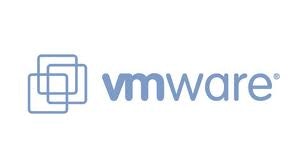Investors always like the idea of getting something for nothing. If you’re willing to consider adding options to your investing arsenal, one strategy seems to offer you the chance to get paid to do something you would have done anyway.
As so often happens, though, there’s no such thing as a free lunch on Wall Street. Later on, I’ll explain why this strategy is so dangerous right now, but first, let’s get you up to speed on exactly what strategy we’re talking about and why it looks so attractive.

Many investors reject options-based investing strategies out of hand, thinking that options are extremely risky instruments that can lose their entire value. But like any tool, options are only as risky as the purposes you use them for. Although you certainly can make extremely high-risk bets using options, other options strategies can actually reduce the risk in your portfolio.
One strategy that many value investors use is called put-writing. To use this strategy, you take a stock that you’re interested in buying but whose price is currently higher than you’re willing to pay. After you choose a lower price at which the stock would be attractive, you then write a put option that allows the option-buyer to sell shares to you at that price.
The strategy has two possible outcomes. If the stock never falls below the strike price of the option, then the put buyer won’t exercise the option. You won’t get the shares, but you will get to pocket the money that you received when you wrote the put. On the other hand, if the stock is below the agreed-upon price, then the put buyer usually will exercise the option. The put buyer will sell shares to you, but it will be at the agreed-upon lower strike price. Moreover, you’ll get an even bigger discount because you still get to keep the money you got when you wrote the option.
Better than limit orders?
Notice how in both cases, you got to keep the proceeds from selling the put option. That makes the put-writing strategy seem a lot smarter than doing what many investors do instead: putting in a limit order to buy shares at a certain lower price. With limit orders, you don’t get paid anything for your commitment.
But limit orders aren’t exactly the same as writing puts. For one thing, as long as the stock price doesn’t trigger the order, you can always cancel a limit order if something fundamental changes about the stock. With put options, on the other hand, you’d have to buy the option back, in some cases paying more than you originally received when you wrote the option. Also, limit orders execute at any time, while options tend to get exercised only near expiration. Therefore, even if the stock temporarily dips, a put option might not get exercised even where a limit order would have gotten cheap shares for you.
Another worrisome thing about put-writing is the fact that because the S&P Volatility Index , which some call the fear index, has been extremely low lately, put-writing often produces less income than it does during more normal markets. Put writers actually want fear levels in the market to be higher because that fear boosts the amount that put buyers are willing to pay for the option.
Most important, with the stock market approaching record highs, many stocks are trading well above what value investors would prefer to pay. Writing put options doesn’t work as well when you choose a strike price far below the current price, because the odds of such a big decline are quite low. Combine that with the overall lack of volatility, and you may find that writing puts isn’t worth the trouble and extra commissions that you’ll pay.
Keep your options open
Right now, it’s better to focus put-writing attention on individual stocks that have gotten hammered hard lately. Apple Inc. (NASDAQ:AAPL) obviously comes to mind after its recent growth disappointment, as panicked investors are paying up for protection from further losses. Similarly, VMware, Inc. (NYSE:VMW) and majority-owner EMC Corporation (NYSE:EMC) both may make good put-writing candidates after VMware’s guidance failed to live up to investors’ high expectations. Despite saying that growth in its licensing business would slow considerably this year, VMware still has plenty of potential, and investors may well have bid down the shares too aggressively.
For the most part, though, when market volatility is low, the best options strategies are ones that involving buying options rather than writing them. As a result, you should wait until more fear creeps back into investors’ minds before trying to capitalize on a put-writing strategy.
The article This Income-Boosting Strategy Is Dangerous Right Now originally appeared on Fool.com and is written by Dan Caplinger.
Fool contributor Dan Caplinger owns shares of Apple. The Motley Fool recommends Apple and VMware. The Motley Fool owns shares of Apple, EMC, and VMware.
Copyright © 1995 – 2013 The Motley Fool, LLC. All rights reserved. The Motley Fool has a disclosure policy.





